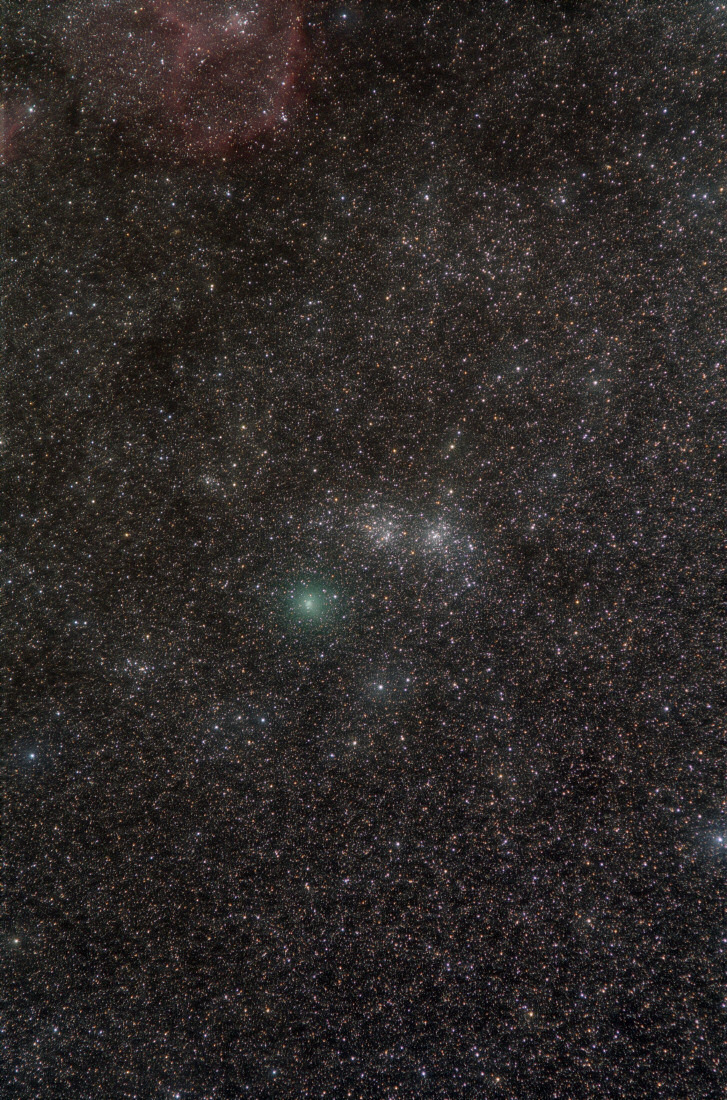
Comet 103P/Hartley, informally known as Hartley 2, is a small periodic comet with an orbital period of 6.5 years. It has been classified as a young dwarf comet, belonging to the Jupiter family of comets (i.e. comets with periods less than 20 years). Hartley 2 was discovered by Malcolm Hartley in 1986. Its diameter has been measured to approx. 1.5 km. The comet passed within 0.12 AU of the Earth on October 20, 2010, only eight days before its perihelion.
Comet Hartley was the subject of a flyby by the spacecraft Deep Impact on November 4, 2010, with a closest approach of 700 kilometers. Many images of the comet's core where taken then.
The comet apparently passed close to the Double Cluster in Perseus as seen from Earth on October 8, 2010. It became not as bright as predicted. Visually, it was inconspicuous, with a large, diffuse coma and central core, but no apparent tail. The red nebulosity at the upper left edge belongs to IC 1805 and IC 1848.
See also an animation of the comet's movement during the exposure time.
 Comet 103P/Hartley near h and χ Persei, Wright-Newtonian CCD-image.
Comet 103P/Hartley near h and χ Persei, Wright-Newtonian CCD-image.
Exposure Data